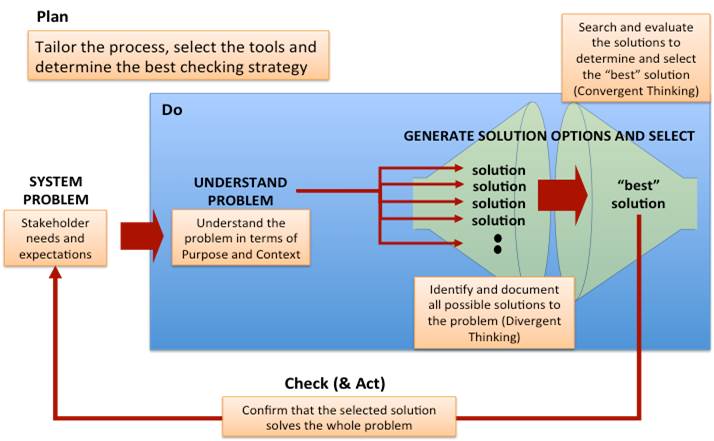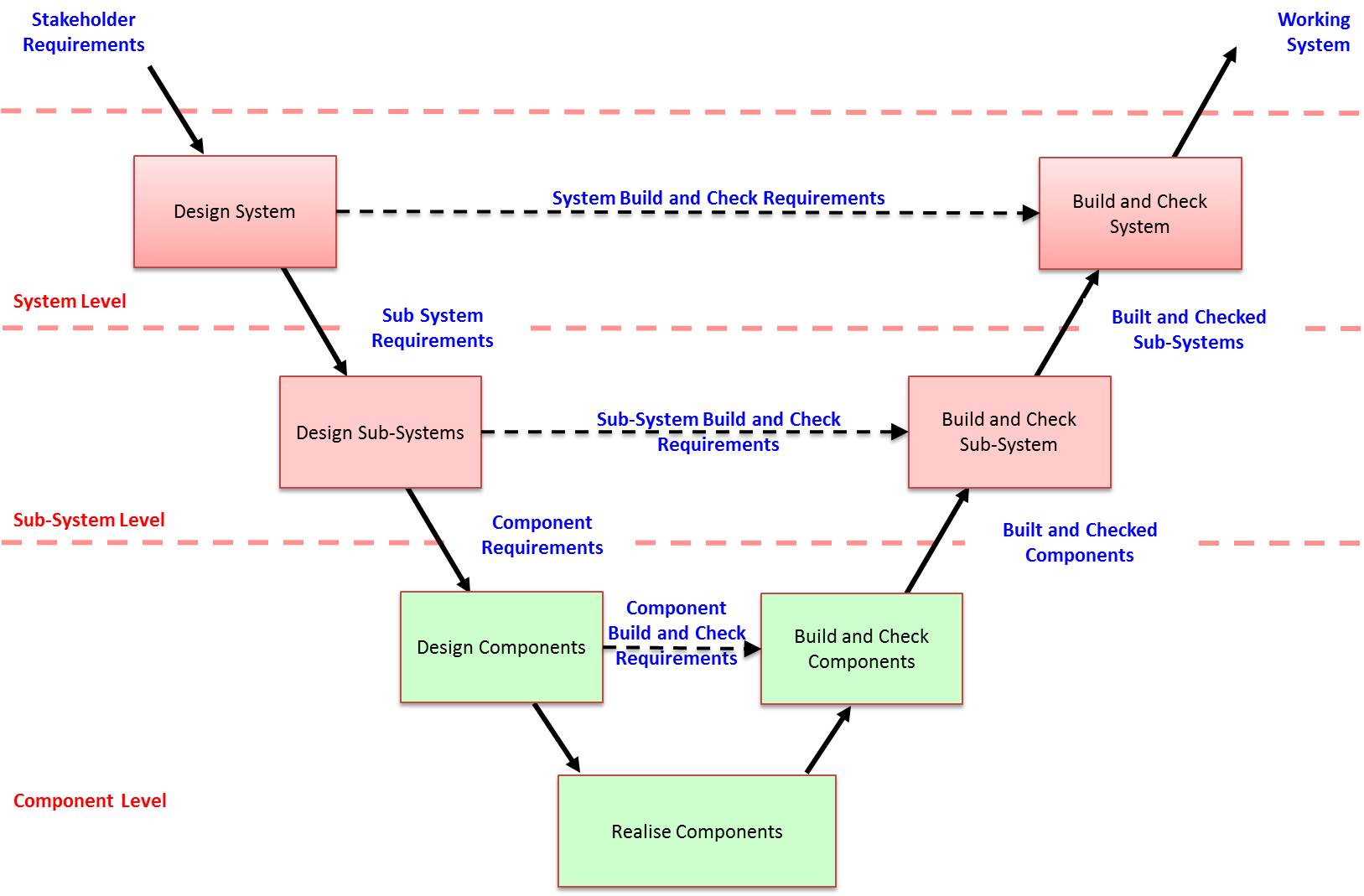Systems Engineering Process
Process for undertaking and for managing the engineering of a system
Good Systems Engineering is, not
surprisingly, systematic. The heart of systems engineering is the Systems
Approach to Systems Design based around the two meta-processes of Plan-Do-Check Act and
Divergent and Convergent Thinking
to apply Systems Thinking in
a structured and disciplined way.

In the Systems Approach the first step is to understand fully the stakeholders’ problem through purpose and context. Only then do we consider solutions where the approach is to generate all possible solutions and the evaluate and select. Checking is an integral part of the systems approach with an emphasis on checking early.
In order to manage complexity the system is designed in successive levels, at the system, sub-system, … component level, with the higher level design being the source of requirements for the next level down. Once the components of the system have be designed, they can be built and integrated to form the higher levels. As this build and integration takes place, checking can be performed to provide confidence that the final built system will do as the stakeholders intended. This “top-down” design and “bottom-up” build and check is often visualized as the “V” diagram.
| |  | |
The V diagram is a useful representation of Systems Engineering, but it does have drawbacks in that it hides several key aspects. Firstly, iteration. The ability to iterate is essential to good Systems Engineering because the details of the higher levels are dependent on the design of the lower levels. Secondly, Lifecycle view. All systems have a lifecycle that needs to be “designed for” and managed if a system is to be a sustained success.